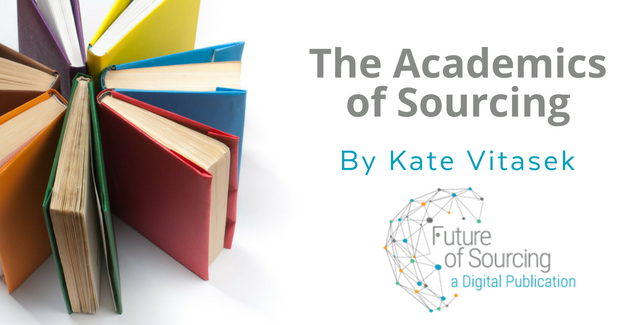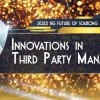To read the first part of this interview, click here.
O: With all of that in mind, what are the implications for the global business services model? Where do you sit on global business services (GBS)? Are you a fan?
KV: I am a fan of a GBS model, done right: a centralised shared services organisation has the ability to provide significant streamlining for large organisations. But I don’t think GBS means the work needs to be captive. A shared services model is actually one of the seven sourcing business models. But unless a company is awesome at performing the service, they should look to outsource services. P&G is a great example of a GBS group that uses outsourcing smartly. They have 60+ countries around the world and the GBS group enables them to streamline many corporate services and make better decisions. But P&G’s GBS outsources many of the services under their umbrella. For example, global facilities and real estate is part of their GBS group. P&G has a highly strategic Vested Outsourcing relationship with Jones Lang LaSalle. The key is P&G does not outsource the governance – but outsources the work and strategic integration of the work among second-tier suppliers.
O: Is governance something that should sit within the GBS, or on top of it? Where, structurally, should governance fit in an organisation like that?
KV: It should sit wherever the work is being done. If the work shifts to GBS, then it should sit there. In the P&G example above, governance sits in GBS and P&G has a person physically in charge of governance for the JLL relationship. But let’s use Microsoft as another example. Microsoft doesn’t have a GBS group the way P&G does. However, Microsoft has a centralised finance group that is in charge of back-office finance operations which has a very strategic Vested relationship with Accenture to perform much of the day-to-day operational work. In this case governance sits in the finance operation.
I’d like to go back to sourcing business models. GBS (shared service) is actually one of the seven sourcing business models. Investing in a GBS model is expensive – because you are becoming an expert in the service. If a service controlled by a GBS group is not a core-competency, you should outsource. Simply put, Peter Drucker got it right when he said “Do what you do best and outsource the rest.”
My advice to GBS leaders is to pause and ask themselves if they should follow P&G and Microsoft – who have a shared services group that relies heavily on outsourcing. You can have both. The key is that governance becomes your core competency – not the services themselves.
O: Tell us a bit more about the new book, Kate: what were the drivers for picking up the pen once again?
KV: Many people think I just want to promote the Vested model. But that is far from the truth. The last thing I want people to do is to use a Vested model when it is not appropriate. That would be like using a sledgehammer to tap in a thumb tack. Not everything is strategic and needs an outcome-based model.
We wrote the new book because people were asking “When is Vested the right model? Why not multisource?” This book steps back and help people answer that question, because Vested – and I will be the first one to tell you – isn’t for everything. Companies need to pick the most appropriate sourcing business for their situation. And Vested is just one of seven of sourcing business models.
I am excited to see how procurement folks are taking to this new book. It was a huge vote of confidence when Dawn [Tiura – President and CEO of the Sourcing Industry Group] said “Trust me when I tell you that after reading this book, you will be able to empty much of your bookshelf. This is truly the only sourcing book you need.”
In the book, we’ve gone into great detail about how to structure the various sourcing business models; we’ve really tried to differentiate between transactional deals, managed services/ performance-based (output-based) deals and Vested outcome-based deals. This book is really about helping people understand which lane they’re in, and how to structure their deals right. I don’t think anyone outside of what we’re doing at the University of Tennessee is looking at architecting deal structures.
I think one of the biggest contributions we have made is taking the systems thinking that we put in place in the Vested model and applying it to all seven of the sourcing business models. We’ve also made a strategic choice to make much of our work open source. For example, the Business Model Mapping toolkit is open source as a free download which teaches organisations how to look at the attributes of their business and determine which sourcing business model is most appropriate for their situation. Once you know which sourcing business model is right for you, then you can approach how to work with a supplier.
Let’s go back to the multisourcing trend in the IT sector. I get nervous with people in IT moving to a multisourcing environment: are they doing that because they’re pissed at their current supplier? Or maybe, just maybe they used the wrong sourcing business model with their current supplier. If this is the case, they should be looking in the mirror and asking themselves if their deal structure is creating perverse incentives.
When people have us do a deal review of their contract and relationship, that’s the number one thing we point out. Is the supplier really bad? Or did you buy something, you’re getting what you paid for, and you’re taking it out on the supplier? Using the wrong sourcing business for the wrong situation creates inherent perverse incentives that drive the wrong behaviour. Unfortunately, buyers don’t understand this; therefore they blame the supplier.
O: Do you see many organisations wanting to use Vested when it is not a good fit?
KV: No. It’s mostly the other way around. Companies have been using a transactional model or an output-based model (performance based/managed services deal) and they should be using Vested. There’s a graphic in the book that shows a continuum of the seven sourcing business models. What we see is companies operating under the lower end of the continuum when they should be at the higher end. By putting Vested in context to all of the sourcing options, people are saying “Wow! I’m down here when I should be up there.” While there could be situations where an organisation is operating in the higher end of the continuum that should be in the lower end, it’s primarily the other way around.
One interesting thing we are seeing is that the majority of organisations shifting to a Vested model are choosing to restructure existing supplier relationships. Companies who are realising Vested is the most appropriate sourcing business model are deciding not to go through a competitive bid process. Let’s take Dell, which outsources all of their North American repairs and returns work to Genco. In the past Dell bid out their contracts every one to three years. When they started to look at Vested, they came to the conclusion that they were probably going to pick Genco again, so why not just restructure the deal to be a Vested deal?
I’m very excited about the book, because it really helps people understand when to use which sourcing business model as well as does a deep dive into how to structure deals for each model.
O: Vested is now a very well-established model. You mentioned at the start how you’ve seen things evolve somewhat over the last few years; how much do you think Vested has contributed to any evolution that there’s been?
KV: When we came out with our first book in 2010 – Vested: Five Rules that Will Transform Outsourcing – I would present at conferences. People would say, “Great theory – but it won’t work for us.” But after just six years we now have enough case studies that proves Vested is more than just a nice theory. In many cases, Vested deals are winning awards in their industry. For example, TD Bank has won two prestigious awards this year in the facilities and real estate industry as a result of their shift to a highly collaborative Vested model with their existing supplier. I am really proud that the Vested model is creating truly transformational results for those – like TD Bank – who make the shift.
While we’ve come along way, we still have a long way to go. I think that far too often people are still just putting a Band-Aid on their challenges. The multisourcing and SIAM trends are two examples. In my opinion in many cases people are following the trend line when it’s simply addressing symptoms and not the root cause. I stand firm in my statement that I don’t think it is smart to outsource your outsourcing. Instead, buyers need to understand that they are still ultimately accountable when “business happens” as I like to say.
I think that’s why Dawn is so excited about this new book. Before people would just think Vested was “some theory” out there. Now we’ve put Vested in context to broader procurement practices, providing a very logical and easy framework for helping companies shifting along the sourcing continuum to architect deals that create – not simply exchange – value. It is a fresh way of thinking about how procurement professionals buy, contract and manage services.






